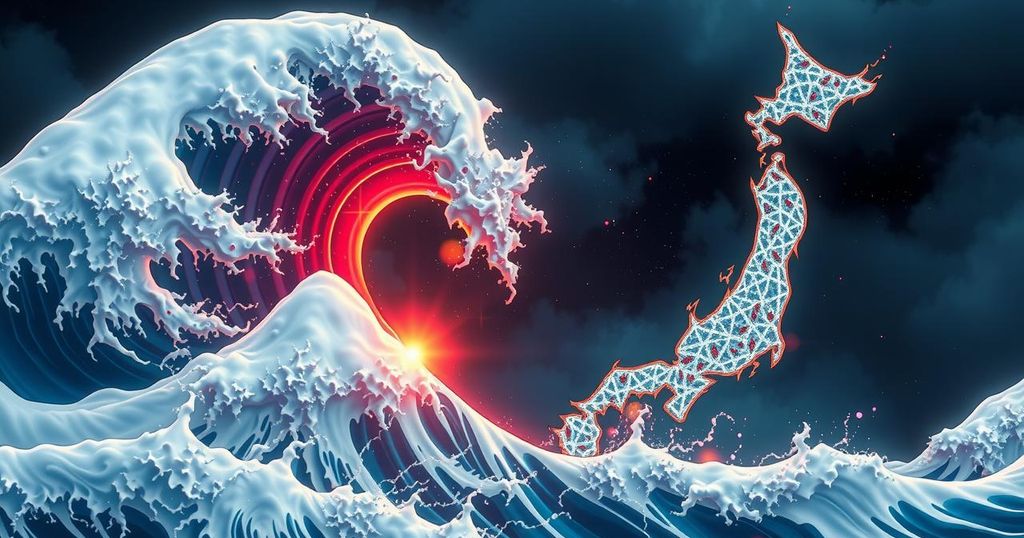Understanding the Ring of Fire in the Context of Japan’s Recent Earthquake

Japan experienced a 6.9 magnitude earthquake on January 13, prompting tsunami advisories for the Miyazaki and Kochi Prefectures. This seismic activity is part of the larger Ring of Fire, which comprises numerous tectonic plates and is known for its earthquakes and volcanic eruptions. Understanding this geological region is crucial for disaster preparedness.
On January 13, a significant earthquake with a magnitude of 6.9 struck the Kyushu region of Japan at 9:19 PM local time, as reported by the Japan Meteorological Agency. The quake occurred at a depth of 30 kilometers. In response, tsunami advisories were issued for the Miyazaki and Kochi Prefectures, warning of possible waves reaching up to one meter in height. Residents near the coast in Kochi were urged to evacuate as a precautionary measure to ensure their safety.
The Ring of Fire is a complex geological structure comprised of volcanic and earthquake activity encircling the Pacific Ocean. This region, shaped like a horseshoe, spans approximately 40,250 kilometers and is formed by the convergence of numerous tectonic plates, including the North American, Eurasian, and Pacific plates among others. The Ring of Fire extends through 15 countries, including Japan, the United States, Mexico, and Indonesia.
Earthquakes are prevalent in the Ring of Fire as the tectonic plates continually grind against one another. The rough edges of these plates often become stuck, and when the accumulated stress exceeds a threshold, this leads to earthquakes. Additionally, volcanic activity is common in this regions as certain geological processes, such as subduction, occur where one tectonic plate is forced beneath another, resulting in the formation of deep oceanic trenches.
Japan is located along the Pacific Ring of Fire, a region known for its tectonic activity, which includes frequent earthquakes and volcanic eruptions. The country has an extensive history of seismic events, making it imperative for authorities to monitor geological changes closely. The recent earthquake serves as a reminder of the constant geological processes occurring beneath the Earth’s surface, particularly in areas where tectonic plates meet and often interact violently, leading to natural disasters such as tsunamis. Understanding the Ring of Fire is crucial for assessing risks and implementing safety measures.
In summary, the recent 6.9 magnitude earthquake in Japan highlights the ongoing seismic activity characteristic of the Ring of Fire, which is known for its significant number of earthquakes and volcanic eruptions due to tectonic plate movements. The issuance of tsunami advisories reflects the need for vigilance in this geologically active area. Japan’s preparedness and rapid response to such events are critical in ensuring the safety of its residents who live in close proximity to the coastline.
Original Source: www.bizzbuzz.news








